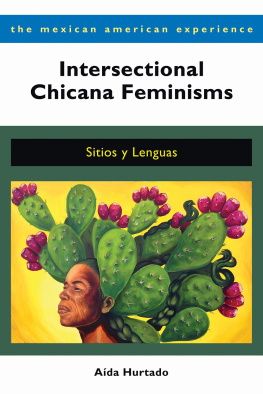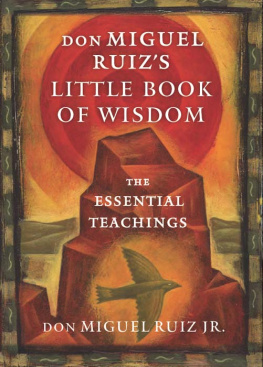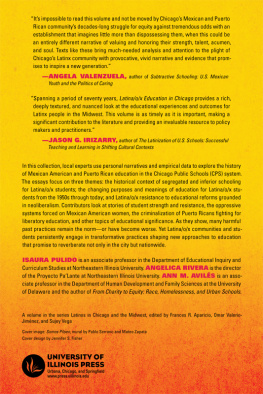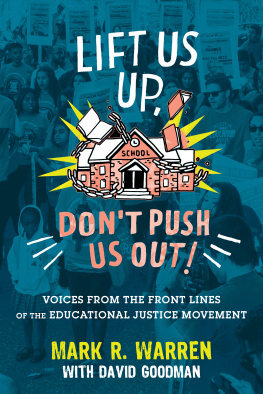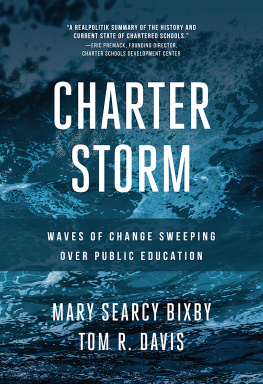CHICANA O STRUGGLES FOR EDUCATION
NUMBER SEVEN
University of Houston Series in Mexican American Studies
Sponsored by the Center for Mexican American Studies
Tatcho Mindiola
DIRECTOR AND GENERAL EDITOR
A complete list of other titles in this series appears at the back of the book.
Chicana/o Struggles for Education
Activism in the Community
GUADALUPE SAN MIGUEL JR.
Texas A&M University Press College Station
Copyright 2013 by University of HoustonCenter for Mexican American Studies
Manufactured in the United States of America
All rights reserved
First edition
This paper meets the requirements of ANSI/NISO Z39.48-1992.
(Permanence of Paper)
Binding materials have been chosen for durability.

Library of Congress Cataloging-in-Publication Data
San Miguel, Guadalupe, 1950
Chicana/o struggles for education : activism in the community / Guadalupe San Miguel Jr.1st ed.
p. cm.(University of Houston series in Mexican American studies ; no. 7)
Includes bibliographical references and index.
ISBN 978-1-60344-937-3 (cloth : alk. paper)
ISBN 1-60344-937-x (cloth : alk. paper)
ISBN 978-1-60344-996-0 (e-book)
ISBN 1-60344-996-5 (e-book)
1. Mexican AmericansEducationHistory20th century. 2. Mexican AmericansSocial conditions20th century. 3. Chicano movementUnited StatesHistory. 4. Mexican American teachersUnited StatesPolitical activity20th century. 5. Educational equalizationUnited StatesHistory20th century. 6. Discrimination in educationUnited StatesHistory20th century. 7. Education, BilingualUnited StatesHistory20th Century. I. Title.
LC2683.S35 2013
371.829'68073dc23
2012044173
This book is dedicated to all those activists who continue to fight on behalf of the community. It is especially dedicated to Elizabeth Betita Martinez and Rudy Acua for their courage, passion, and commitment to social justice and human rights.
[Educational change] is not for the faint-hearted, it is not for the undaring; it is for those who are willing to dare, to try, to stumble, and perhaps fall.
Armando M. Rodriguez, 1971
Contents
Acknowledgments
I would like to thank the University of Houston history department, the Center for Mexican American Studies, and the University of Houston administration for giving me both the necessary funds to conduct the much-needed research for this project and for providing me with the opportunity to write up the results. Thanks also to all the graduate students who influenced my thinking on many of the issues dealt with in the book. Of particular importance are Felipe Hinojosa, Juan Galvan, Alberto Rodriguez, and Carlos Cant. A special thanks to my colleague Rubn Donato for the many conversations we have had over the years discussing the plight and struggles of Mexican American education.
I want to thank my sweet-natured teenage son, Gabriel, and my precious daughter, Aime-Anali, for putting up with my shifting moods during these past few years. Finally, special thanks go to my wonderful and caring significant other, Lorena Lopez, for appearing at a very critical period in my life. She not only inspired me to finish this project, but more importantly she gave me a reason to live life to its fullest. She believed in me and in all that could be done. She loved me and gave me hope when I most needed it. She also gave me another child and significantly enriched my life. Gracias a ti y a todos los demas.
CHICANA O STRUGGLES FOR EDUCATION
Introduction
For over a hundred years, Mexican Americans have contested the limited and inferior educational opportunities public school officials have offered them.
This small but important scholarship on community activism and educational reform exemplifies the tendency of viewing Mexican American education history primarily through the lens of discrimination.
While documenting the long and arduous campaign to achieve educational equality is important, it provides an incomplete picture of community activism in education. It suggests that community and parent activists only engaged in contesting public school policies and practices. The existing literature on Mexican origin educational history prior to the 1960s, however, suggests that community activists engaged in at least two additional reform strategies: advocacy and private schooling.
ADVOCACY
Advocacy involved promoting reforms that met the communitys cultural, academic, and political needs and interests. The historical literature on education indicates that one of the many reforms Mexican American activists promoted during the first half of the twentieth century was curricular and instructional pluralism. During World War II, for instance, activist groups advocated the teaching of Spanish in the schools and the inclusion of Mexican heritage in the textbooks.
Additionally, community and parent activists supported the development of either specific or comprehensive school reforms aimed at improving their childrens academic achievement. An example of the latter occurred during the 1930s and 1940s in several northern New Mexican communities. In this period, New Mexican Hispanos, the term of preference for Mexican Americans in this state, supported the comprehensive school reform efforts of Lloyd S. Tireman, a nationally known educator. With their support as well as with state financial assistance, Tireman modified the curriculum, introduced innovative teaching methods, and increased parental involvement in four distinct communitiesSan Jose (in Bernalillo County), Nambe (in Santa Fe County), Cedro (in Bernalillo County), and Taos (in Taos County). His ultimate purpose was to ensure that the schools related to the community in more positive ways. And for a number of years, they became more responsive to the Hispano community, more reflective of its linguistic and cultural heritage, and more successful in educating Spanish-speaking children. However, for a variety of reasons, including the loss of community support, these schools soon closed their doors. Despite their closure, these experiments indicated that Hispano parents were willing to support comprehensive reforms that improved their childrens educational opportunities.
In the first half of the twentieth century, Mexican Americans additionally supported instructional and curricular reforms aimed at improving their childrens academic achievement. Reading reforms in the 1920s,
Another reform for which Mexican American activists, parents, and students advocated was increased access to different levels of public education.
Carl Allsup briefly noted in his study of the American GI Forum (AGIF) that the organization not only challenged discrimination in the schools but it also played a key role in promoting school enrollment during the 1950s. He discussed how the AGIF engaged in back-to-school rallies at midcentury and how it went about encouraging parents to send their children to school once it opened. These back-to-school rallies were part of a larger strategy to ensure that Mexican origin access to K-12 education increased at a rate comparable to Anglo student enrollment.
Mexican Americans, on occasion, also advocated and supported a variety of reforms aimed at promoting student access to higher education. Carlos Muoz, for instance, traced the participation of student activists as they sought and encouraged higher educational opportunities for Mexican Americans in the 1930s and 1940s. He argued that during these decades they took advantage of the higher educational opportunities American society offered. College-educated youth formed an organizationthe Mexican American movementand a newspaper
Next page


